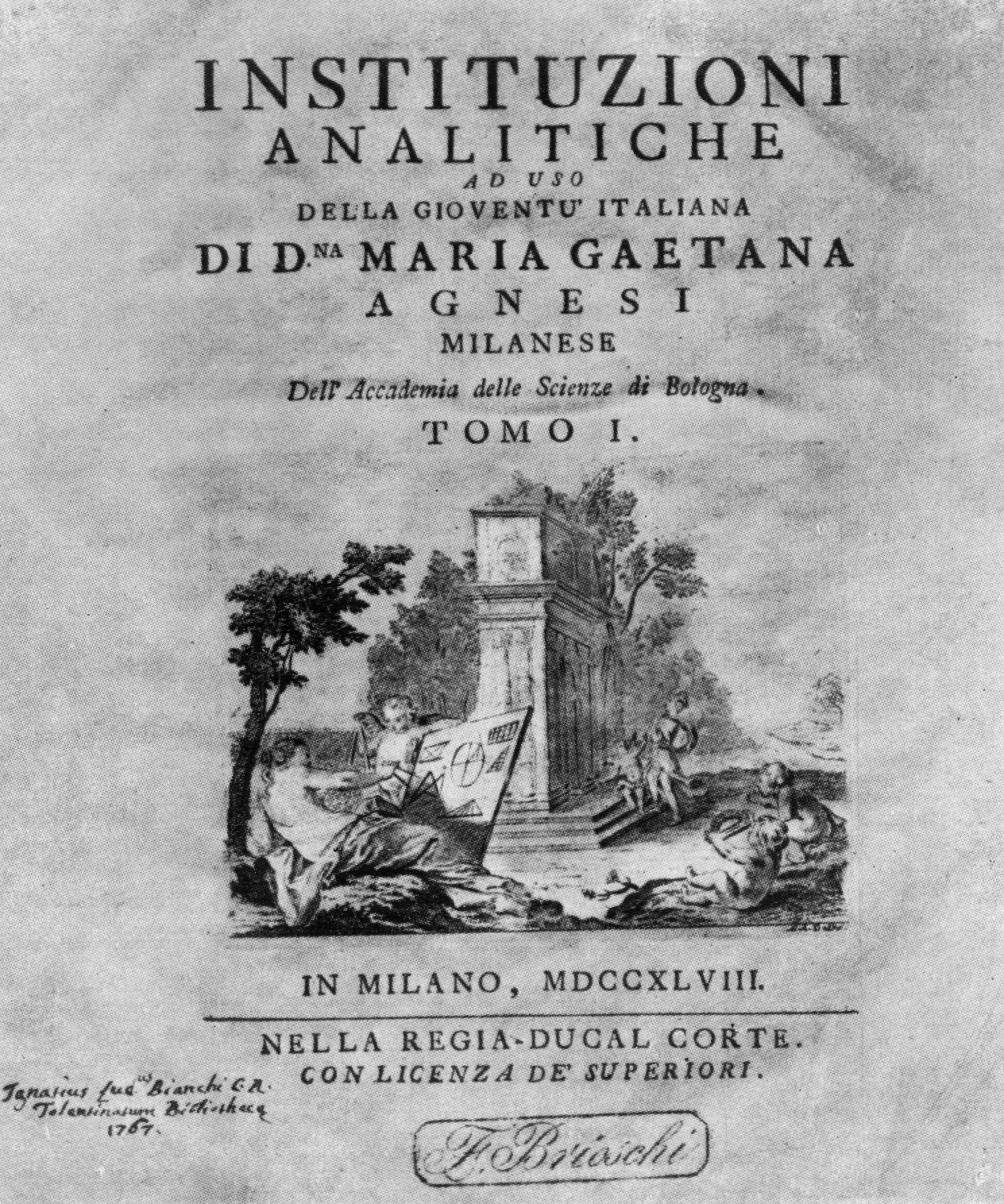
Home
 Maria Gaetana Agnesi 300th Anniversary of Birth Scott 1692 (2018) In 2018, Vatican City issued two stamps under the title of Science and Faith. This continued a tradition of honoring scientists who contributed greatly to the understanding of the physical sciences and how they integrated into Christian faith. One of the stamps from 2018 commemorates the 300th anniversary of the birth of Maria Gaetana Agnesi. She is considered to be the first woman in the Western world to have achieved a reputation in mathematics. Born in Milan on May 16, 1718, Maria was the eldest child of a wealthy silk merchant, and while growing up was provided with the best tutors available. At an early age, she displayed a vast knowledge in foreign languages and philosophy, and her father often hosted gatherings where she could display her knowledge.  Cover Page of Analytical Institutions for the Use of Italian Youth by Maria Gaetana Agnesi (1748) From Wikimedia Commons. In the Public Domain Maria would turn her attention to mathematics. Her best-known work, written in 1748, is Analytical Institutions for the Use of Italian Youth. A two-volume textbook, it is considered the first work written by a woman to address such diverse mathematical concepts as algebra, analytical geometry, and integral and differential calculus. The French Academy of Sciences called the text a "most complete and best-made treatise" on these subjects. Pope Benedict XIV appointed Agnesi the first female professor of mathematics at the University of Bologna in 1750. However, Agnesi never assumed her university position. Instead, she increasingly turned to religion and, following the death of her father in 1752, devoted herself almost exclusively to charitable work and religious studies, particularly the care of the poor, homeless, and sick. She founded a home for Milan's elderly, and she lived there until her death in 1799. Virtually penniless, this brilliant mathematician was buried in a mass grave for the poor. REFERENCES: |